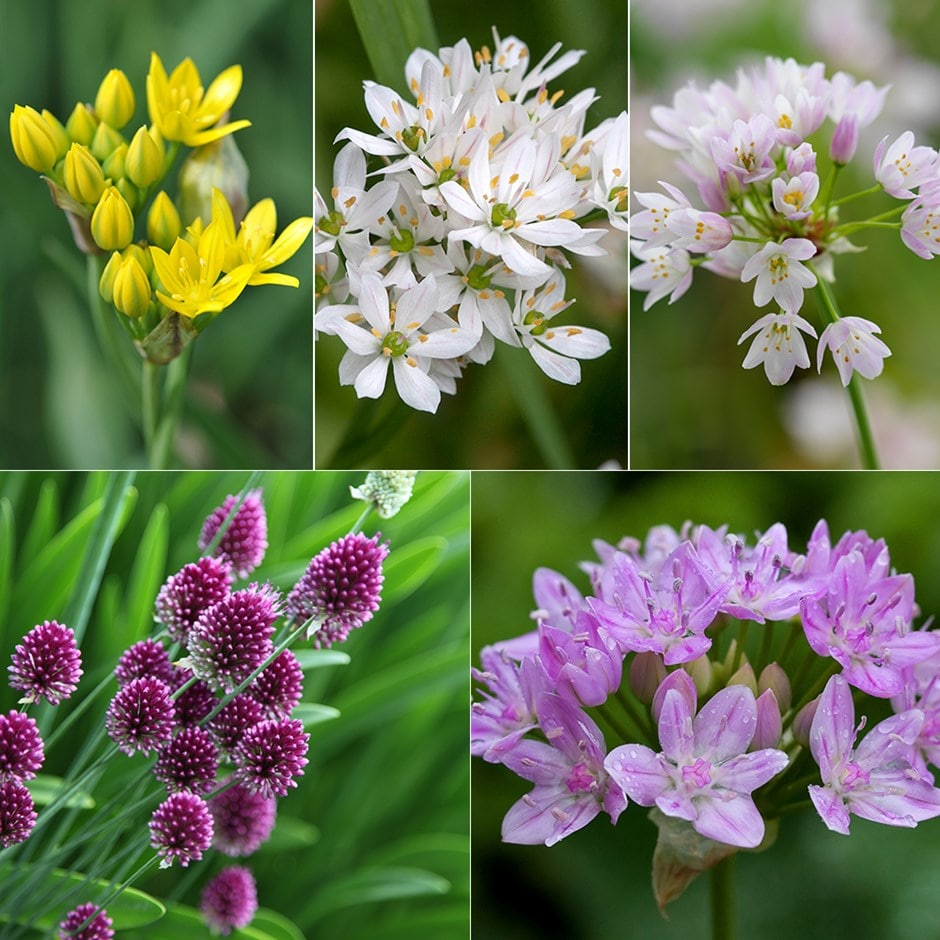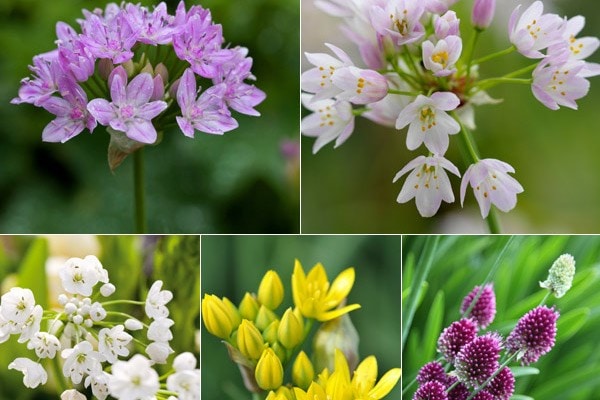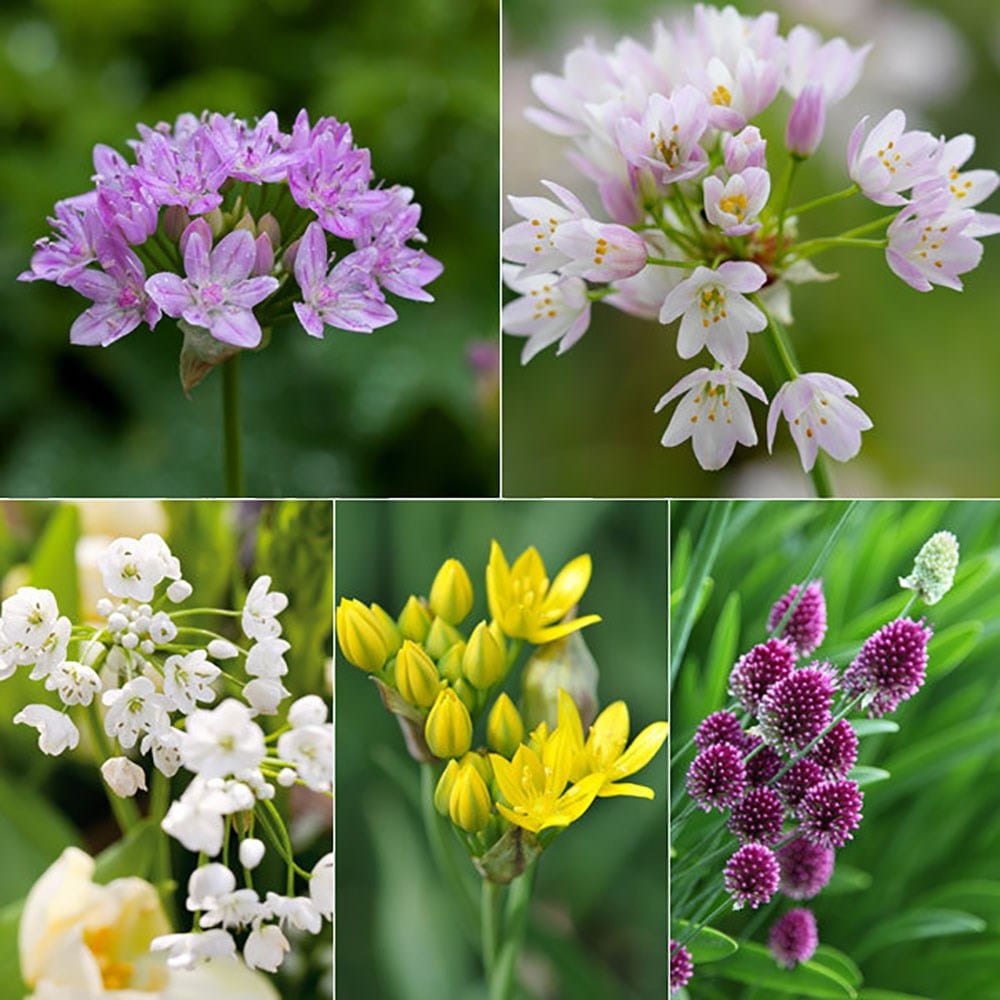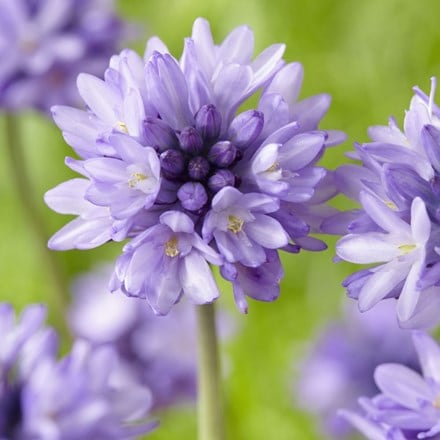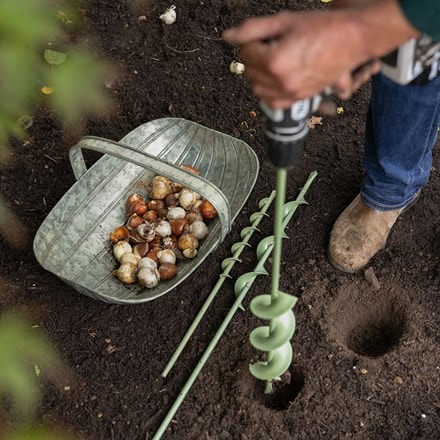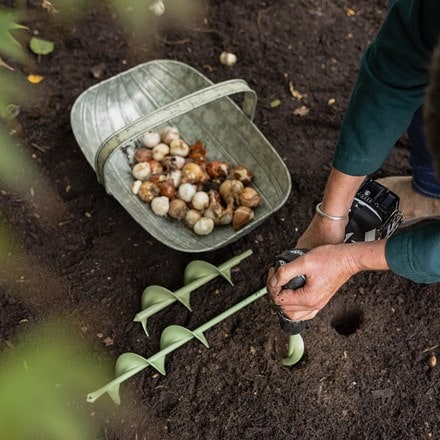200 alliums - Save £5.99
allium collection
- 1 × collection
- £24.29 £34.95 £0.12 each
- available to order from summer
Delivery options
- Bulbs (only) £4.99
- Position: full sun
- Soil: fertile, well-drained soil
- Flowering period: May to August
- Hardiness: fully hardy
This collection of vibrant alliums offers a stunning range of colours and forms, perfect for adding structure and seasonal interest to borders throughout the spring and summer.
From golden, star-shaped blooms that bring early season sparkle, to soft, delicate clusters in shades of white and pink, each species adds a unique touch. Tall stems with deep, rich flowerheads create vertical interest, while bell-shaped blooms offer a papery texture that catches the light. A great way to introduce varied heights, colours, and lasting beauty over a long timeframe.
From golden, star-shaped blooms that bring early season sparkle, to soft, delicate clusters in shades of white and pink, each species adds a unique touch. Tall stems with deep, rich flowerheads create vertical interest, while bell-shaped blooms offer a papery texture that catches the light. A great way to introduce varied heights, colours, and lasting beauty over a long timeframe.
In each collection you will receive the following bulbs:
- 50 × Allium moly: This vigorous, golden garlic is perfect for planting in a light woodland area. It produces clusters of loosely-packed, star-shaped, brilliant yellow flowers, which look spectacular next to the drooping heads of purple snakes head fritillaries. Grows to 25cm.
- 75 × Allium neapolitanum Cowanii Group: Open clusters of pure white flowers appear in late spring or early summer, creating a soft, lacy effect. The flowers last for ages after being cut and the bees will find them very attractive. Grows to 40cm.
- 25 × Allium roseum: A variable plant, which produces very pretty, open clusters of pale to rich pink flowers above the strap-shaped foliage. Flowering in late spring or early summer, it is useful for bridging the gap, creating pockets of colour when there is often a bit of a lull in the garden. Grows to 65cm.
- 25 × Allium sphaerocephalon: Small, egg-shaped, claret-coloured flowerheads appear like drumsticks on tall, slender stems above slender mid-green leaves in mid to late summer. These diminutive claret flowers look great emerging from a screen of foliage, or against a backdrop of ornamental grasses. Grows to 90cm.
- 25 × Allium unifolium: The pinky-purple, bell-shaped flowers on this allium are quite papery, which means they last longer than many of the other varieties. They emerge in clusters of up to 20 at a time, so make a great plant for an alpine bed or to add colour to the front of a mixed border. Grows to 30cm.
Allium bulbs are easy to grow in a sunny spot with freely drained soil, or a good quality potting compost. Ideally they should be planted in September or October, but could also be planted in early November in milder regions.
While keeping the size of the flowerhead in mind and avoiding overcrowding, dig holes roughly three times as deep as the diameter of the bulb and place them at the base, pointy side up before gently infilling and watering to settle them in.
In early spring, as growth begins, apply a balanced, slow-release fertiliser, and allow the plants to die back naturally and completely before tidying away. For further details, please see each individual allium's webpage.
While keeping the size of the flowerhead in mind and avoiding overcrowding, dig holes roughly three times as deep as the diameter of the bulb and place them at the base, pointy side up before gently infilling and watering to settle them in.
In early spring, as growth begins, apply a balanced, slow-release fertiliser, and allow the plants to die back naturally and completely before tidying away. For further details, please see each individual allium's webpage.
- Pets: TOXIC if eaten; Humans: Ornamental bulbs - not to be eaten
